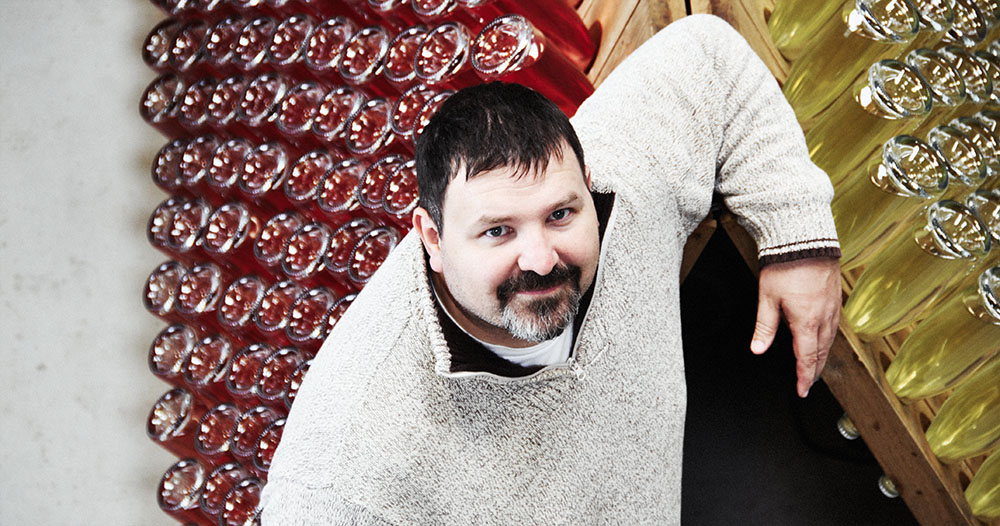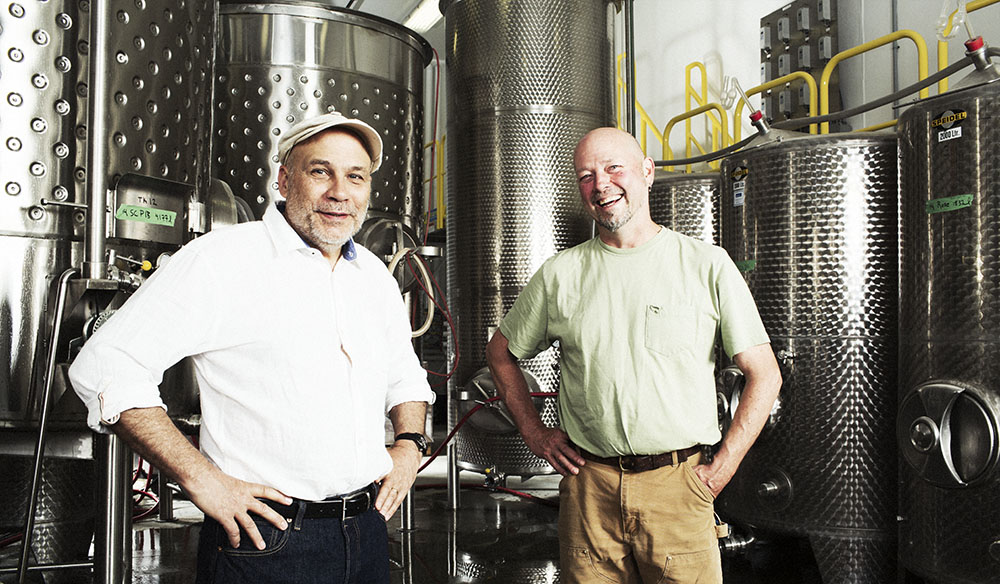While the “time to focus” argument is driven by variety, there’s also no shortage of proponents who believe that sparkling wines could be BC’s best bet. BC sparklers are coming to the fore, as numerous wineries jump on the bubble bandwagon. As to why it took so long, I’ll hazard a guess that with ice wine all but dead and buried (with a firm assist from climate change), it’s sparkling wine’s turn to be in the spotlight, particularly as it sheds its purely celebratory mantle for a more flexible, food-friendly robe.
Sumac Ridge founder Harry McWatters first came up with the idea that there was a place for BC bubble. Evidently he was right: Sumac’s new ownership has seen fit to brand Steller’s Jay as a stand-alone product.
At the time, beyond a messianic group of committed believers, there were few admirers of BC wine, period. Moreover, the idea that people would opt for an unproven BC nod to Champagne when they could just as easily buy Sonoma sparkling or even Spanish Cava seemed far fetched.
Noted author John Schreiner credits researcher Gary Strachan for coming up with the idea of putting Okanagan acidity to good use by making sparkling wines. According to Schreiner, Strachan launched National Research Council-funded trials in 1983, making several batches at the Summerland Research Station. McWatters became involved (as did winemaker Eric von Krosigk) and Steller’s Jay eventually became a reality.
McWatters’ commercial winery background underscored the value of a balanced portfolio. More to the point, he was convinced that grapes coming from a triangle within the central Okanagan (between Summerland, Naramata and Okanagan Falls) had the right amount of bright acidity to make good sparkling.
“One thing we’ve never been short of is acid, so rather than fight it, we thought, why not capitalize on it?,” he says.
In hindsight, McWatters adds, “It was a way too ambitious project. We made six bottles each of — I don’t know how many — different cuvées, as well as single varieties, using six different yeasts.”
But all was not in vain.
“What we learned from it, still holds true in my mind, especially if we look at what each variety brought to the blend: Pinot Blanc delivers the fruit; Chardonnay, elegance and finesse; while the backbone and character came from Pinot Noir.”
At the end of the day, the point was proven. In fact, McWatters suggests it’s too bad those trials didn’t happen years earlier since they would have been equally as successful using hybrids. “Just look at what Bruce Ewart has achieved [at L’Acadie], in Nova Scotia,” he says.
McWatters went on to develop a legendary love for his bubble. He probably hosted more winemaker’s dinners than anyone else in the BC industry. And each one started with a glass of Steller’s Jay.
His latest venture, Time Estate Winery (housed in a repurposed cinema complex in downtown Penticton) will release its first sparkler in a couple of years, a predominantly Chardonnay–Pinot Blanc blend. “We don’t have access to the Pinot that we’d like right now,” he says.
At the time, it’s fair to say, there wasn’t much love lost between McWatters and Blue Mountain founder Ian Mavety, who were firmly on opposite sides of the VQA fence. McWatters was a founding father of VQA, while Mavety chose not to embrace the program in any way. His prime objection arose from the fact that VQA allows wineries to use the term “estate” on their labels for wines that don’t contain estate-grown fruit. To this day, Blue Mountain uses only estate-grown grapes.
With Pinot Noir and Chardonnay being the priority, it was only natural that Blue Mountain would add traditional method sparkling wines to its collection. However the success of Blue Mountain Brut (in addition to its other styles) has served only to build on the winery’s legendary cult status.
Now in the hands of the brother and sister team of Matt and Christie Mavety, the winery has increased the emphasis on the sparkling wines their father introduced.
Just as for the still wines, “We’ve always tried to let the terroir speak,” says winemaker Matt Mavety.
“Our original approach was very much Champagne style. Plus, the fact that we have always grown our own fruit has been hugely beneficial in terms of experience to draw on.”
Blue Mountain’s Gold Label Brut has become the BC “gold standard” for bubble, although it no longer goes unchallenged as the quality and scope of BC sparkling wines continues to increase and expand. In addition, rosé, Blancs de Blancs and RD Vintage wines continue to assist in maintaining Blue Mountain’s pre-eminence as a sparkling wine producer.


